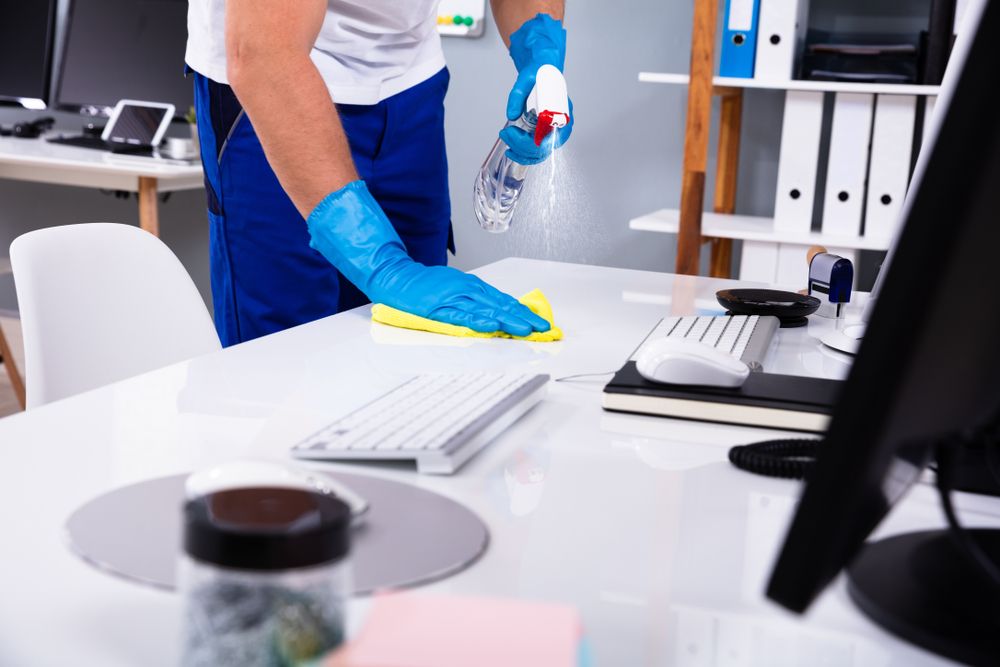7 Effective Workplace Maintenance Tips
Workplace maintenance issues can have a serious impact on the running of an organization.

For many organizations, dealing with the ins and outs of running a successful business takes up the majority of the working day. Managers are busy focusing on the long-term future of the company, while team members are hustling to hit their targets. As a result, workplace maintenance can be neglected leading to costly repairs.
Workplace maintenance issues can have a serious impact on the running of an organization. It is important to prevent problems from arising before they become a serious issue as leaving fixes for later can pose multiple risks for any company. In this article, you will find 7 valuable office maintenance tips and tricks essential for any workplace.
Why is Workplace Maintenance Important?
Regular maintenance is essential to keep office equipment, furniture, and the workplace environment safe and reliable for your employees. Inadequate maintenance can lead to dangerous situations, accidents, and health problems. Regular workplace maintenance also reduces the risk of financial losses caused by unexpected events such as flooding or fire. Maintaining a safe and comfortable office space with functioning appliances, machines, and facilities can help to improve employee morale and company workflow.
7 Effective Tips for Workplace Maintenance
1. Bring in the professionals
It can be tempting to try and reduce costs by fixing maintenance issues either by yourself or in-house. But beware of the DIY approach. Carrying out repairs without professional knowledge can be time-consuming and will often not last long, resulting in unnecessary effort and stress. Remember, prevention costs less in the long run. Emergency workplace maintenance services can be extremely expensive. Consider bringing in a qualified professional for risk assessments and to highlight any issues you may have overlooked. If a problem arises, schedule a tradesperson as soon as possible.
2. Keep your workplace clean
It is especially important in the current climate to keep your workplace clean and healthy and to educate employees on hygiene protocols. This not only helps to maintain their physical well-being but according to studies, can improve cognitive performance by more than 60 percent. Ensure that employees have access to cleaning materials and disinfecting wipes, and encourage them to clean their workstations and equipment regularly. If you have a kitchen, clean and review appliances and make sure fridges/microwaves are working correctly. You could also consider a food and drink policy, to designate specific areas for eating.
Make sure that you choose the right cleaning equipment to take care of pollutants. If necessary, install air cleaning and filtration systems for ventilation. Consider employing a professional cleaning service to ensure your workplace is clean and safe at all times, from the restrooms to the breakrooms.
3. Re-organize and modernize workplace facilities
Modernizing your workplace might sound expensive but there are ways you can re-organize your offices to improve productivity. Providing more open spaces improves communication and collaboration. Upgrading computer equipment ensures your team is working with up-to-date systems that won’t slow them down. Refurbishing workplace facilities and repainting office walls – especially with bright, warm colors – can have a positive effect on how employees feel about coming to work. Keeping spaces tidy and well-organized sets a standard and shows dedication to conscientious behavior in the workplace.
When you re-organize, review plumbing, air conditioning, electrical installations, light switches, sockets, ceiling panels, etc. You could also consider employing a specialist in office design to help make effective changes to suit your budget.
4. Inspect and maintain office furniture
Many people are unaware of the implications of the physical conditions under which they work, both in the office and from home. Well-functioning furniture is fundamental for employee happiness, health, and productivity. Regularly inspect chairs, desks, computer monitors, and lighting. Make repairs where necessary and replace old, broken furniture. If you can, provide ergonomically sound equipment that is designed to maintain employee health and well-being. An ergonomic chair is said to guarantee between 15 and 20 percent more productivity, by reducing distractions and providing physical and mental benefits. Educate your remote team members on how to set up an effective personal workstation.
5. Monitor air quality
One of the easiest ways to improve air quality is by opening windows in the workplace, however, this might not always be possible in modern office spaces, especially in winter. Make sure your air conditioning system and air vents are in good working condition. Don’t block vents or ducts with large items. If the space allows, install air purifiers to prevent excessive dust. You can also use fans to increase air-flow depending on office temperature.
Schedule regular technical inspections, aim to do this once a quarter to maintain air quality.
6. Create checklists for regular inspections
Create regular workplace maintenance checklists for every area of your facilities:
- Architectural and construction – inspection of roofing, walls, arches, masonry, emergency exits, and exterior building features
- Plumbing – water supply, distribution, soil, all water-using equipment, and sewage/waste systems
- Small and large openings – doors and windows
- Fire safety equipment – inspect smoke, fire and CO2 alarms, sprinkler systems, and fire extinguishers/blankets
- HVAC systems – heating, vents, air conditioning, along with air ducts
- Office/kitchen equipment – furniture, electronics, and other appliances
- Lighting systems – light fixtures, wiring, and switch control
Small issues can quickly become a crisis in the workplace. Such events can be costly, interrupting workflow, decreasing revenue, and placing employees’ health in danger. Once you have your checklists in place, make a plan to schedule regular checks. Monitor these checks and assess any highlighted issues. Do not let these checks slide, unless you want a nasty surprise when things start to go wrong.
7. Bring nature into the workplace
Where possible, add nature and greenery into the workplace. Plants are not only aesthetically pleasing, but they can be beneficial for employee productivity levels and their physical and mental health. Also, certain air-purifying plants help to detoxify the office. But don’t forget that plants need maintenance too. They need regular watering, fertilizer, and access to sunlight.
Workplace Maintenance – Our Conclusion
Regular maintenance in the workplace is an investment rather than a cost. It keeps your employees safe, happy, and healthy so they can work to their top potential. It also reduces the risk of financial outlays as a result of faulty equipment or facilities. Create a maintenance plan to suit your organization and put protocols in place to ensure checks are carried out frequently. If necessary, hire a dedicated maintenance worker to supervise this process.


